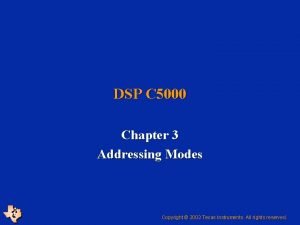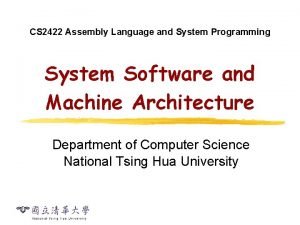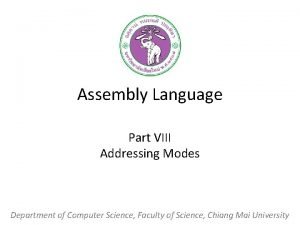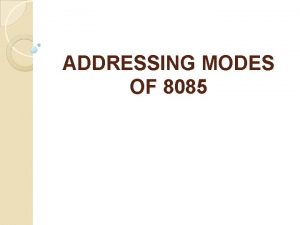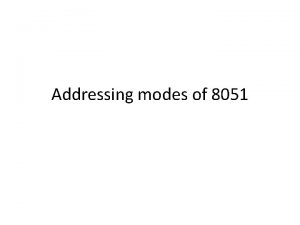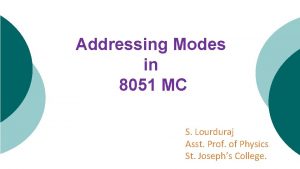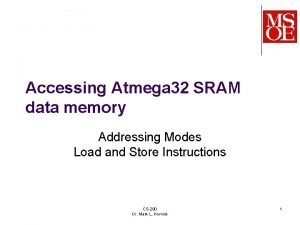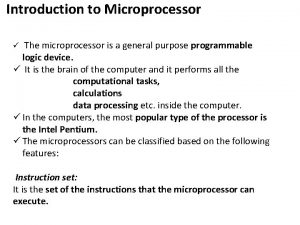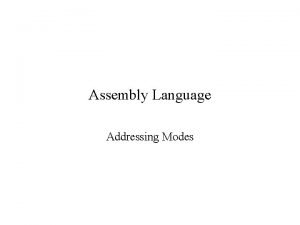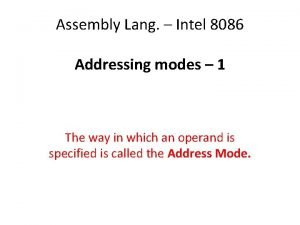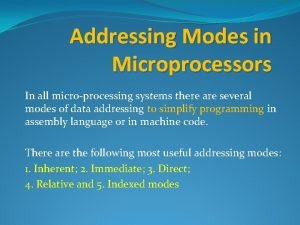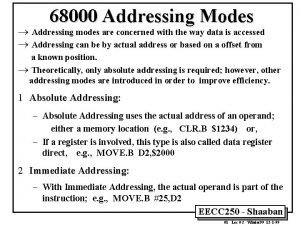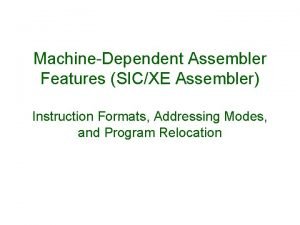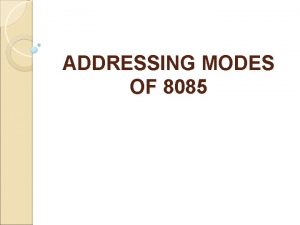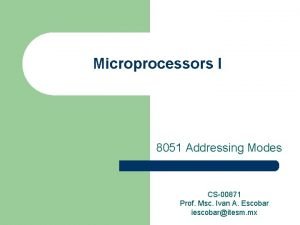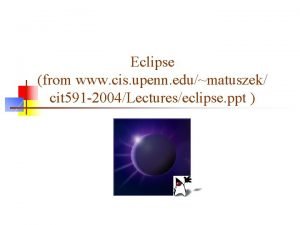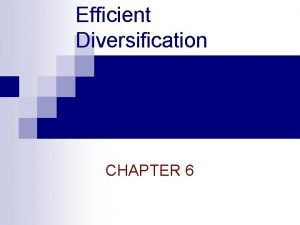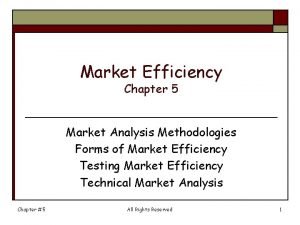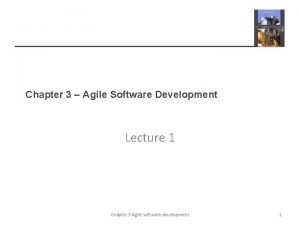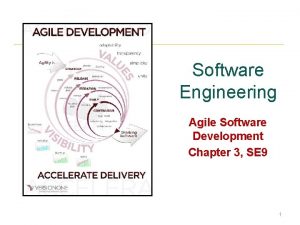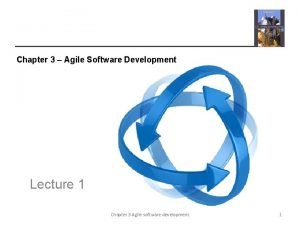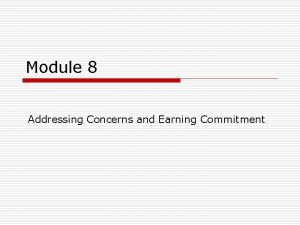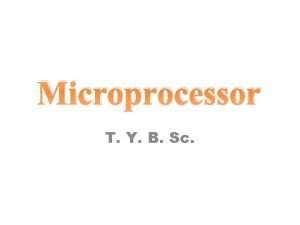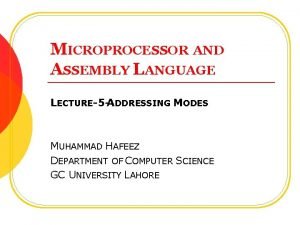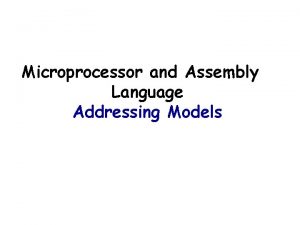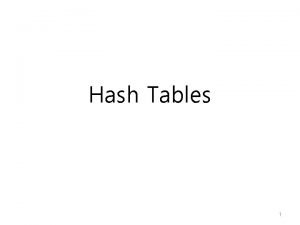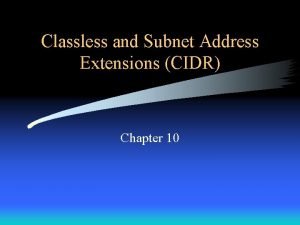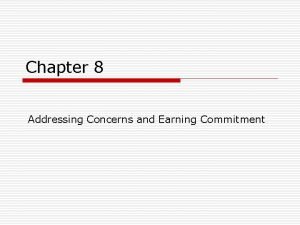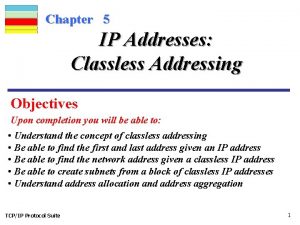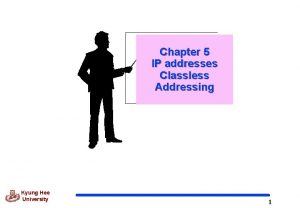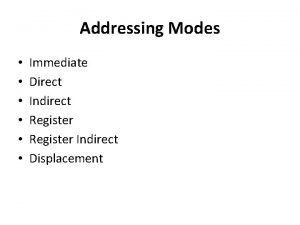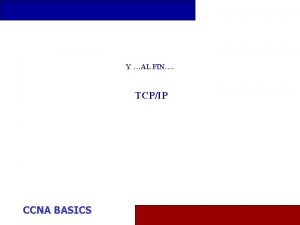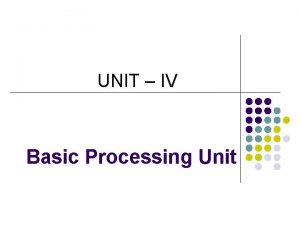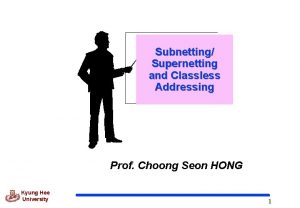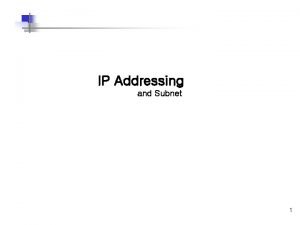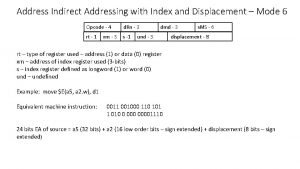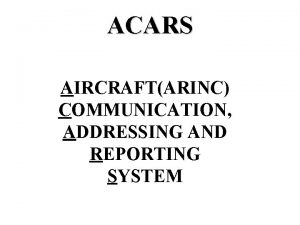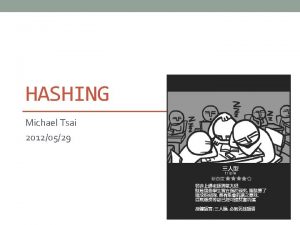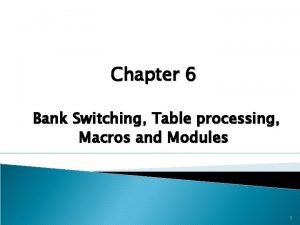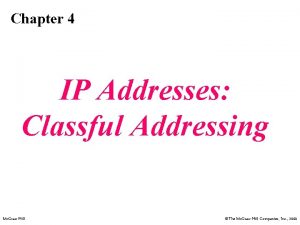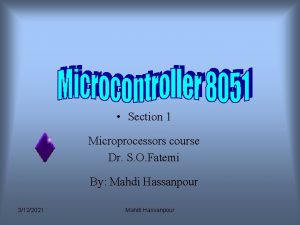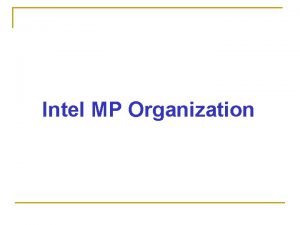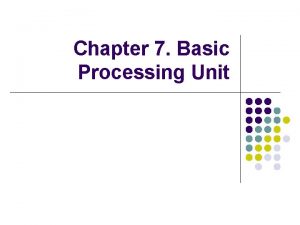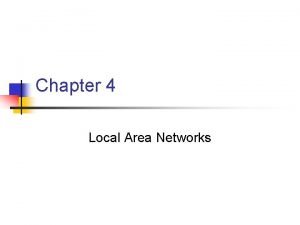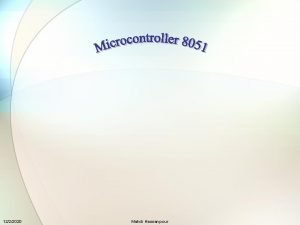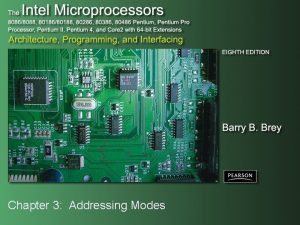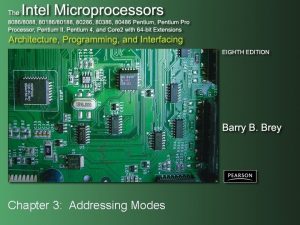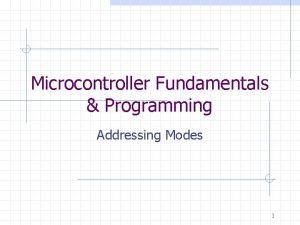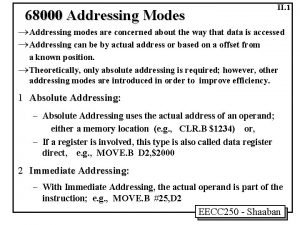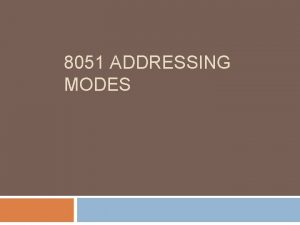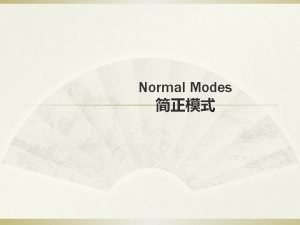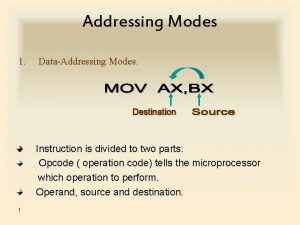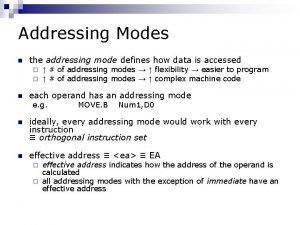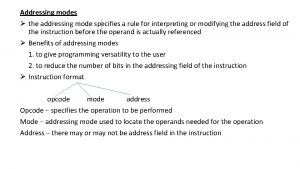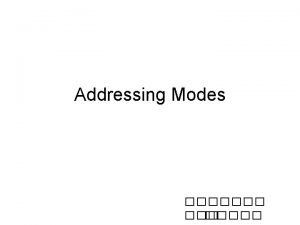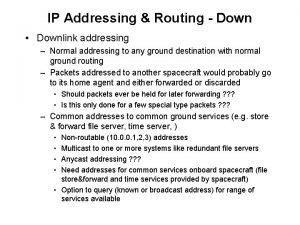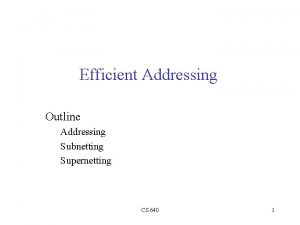Chapter 3 Addressing Modes Introduction Efficient software development




















![Figure 3– 5 The operation of the MOV AL, [1234 H] instruction when DS=1000 Figure 3– 5 The operation of the MOV AL, [1234 H] instruction when DS=1000](https://slidetodoc.com/presentation_image/45b0e8ecfb2c553169e368ad9f29c598/image-21.jpg)



![Figure 3– 6 The operation of the MOV AX, [BX] instruction when BX = Figure 3– 6 The operation of the MOV AX, [BX] instruction when BX =](https://slidetodoc.com/presentation_image/45b0e8ecfb2c553169e368ad9f29c598/image-25.jpg)









![Figure 3– 10 The operation of the MOV AX, [BX+1000 H] instruction, when BX=0100 Figure 3– 10 The operation of the MOV AX, [BX+1000 H] instruction, when BX=0100](https://slidetodoc.com/presentation_image/45b0e8ecfb2c553169e368ad9f29c598/image-35.jpg)



![Base Relative Plus lndex Addressing Assembly Language Size Operation MOV DH, [BX+DI+20 H] 8 Base Relative Plus lndex Addressing Assembly Language Size Operation MOV DH, [BX+DI+20 H] 8](https://slidetodoc.com/presentation_image/45b0e8ecfb2c553169e368ad9f29c598/image-39.jpg)
































- Slides: 71

Chapter 3: Addressing Modes

Introduction • Efficient software development for the microprocessor requires a complete familiarity with the addressing modes employed by each instruction. • This chapter explains the operation of the stack memory so that the PUSH and POP instructions and other stack operations will be understood. The Intel Microprocessors: 8086/8088, 80186/80188, 80286, 80386, 80486 Pentium, Pentium Processor, Pentium II, Pentium, 4, and Core 2 with 64 -bit Extensions Architecture, Programming, and Interfacing, Eighth Edition Barry B. Brey Copyright © 2009 by Pearson Education, Inc. Upper Saddle River, New Jersey 07458 • All rights reserved.

Chapter Objectives Upon completion of this chapter, you will be able to: • Explain the operation of each data addressing mode. • Use the data addressing modes to form assembly language statements. • Explain the operation of each program memory addressing mode. • Use the program memory addressing modes to form assembly and machine language statements. The Intel Microprocessors: 8086/8088, 80186/80188, 80286, 80386, 80486 Pentium, Pentium Processor, Pentium II, Pentium, 4, and Core 2 with 64 -bit Extensions Architecture, Programming, and Interfacing, Eighth Edition Barry B. Brey Copyright © 2009 by Pearson Education, Inc. Upper Saddle River, New Jersey 07458 • All rights reserved.

Chapter Objectives (cont. ) Upon completion of this chapter, you will be able to: • Select the appropriate addressing mode to accomplish a given task. • Detail the difference between addressing memory data using real mode and protected mode operation. • Describe sequence of events that place data onto the stack or remove data from the stack. • Explain how a data structure is placed in memory and used with software. The Intel Microprocessors: 8086/8088, 80186/80188, 80286, 80386, 80486 Pentium, Pentium Processor, Pentium II, Pentium, 4, and Core 2 with 64 -bit Extensions Architecture, Programming, and Interfacing, Eighth Edition Barry B. Brey Copyright © 2009 by Pearson Education, Inc. Upper Saddle River, New Jersey 07458 • All rights reserved.

3– 1 DATA ADDRESSING MODES • MOV instruction is a common and flexible instruction. – provides a basis for explanation of data addressing modes • Figure 3– 1 illustrates the MOV instruction and defines the direction of data flow. • Source is to the right and destination the left, next to the opcode MOV. – an opcode, or operation code, tells the microprocessor which operation to perform The Intel Microprocessors: 8086/8088, 80186/80188, 80286, 80386, 80486 Pentium, Pentium Processor, Pentium II, Pentium, 4, and Core 2 with 64 -bit Extensions Architecture, Programming, and Interfacing, Eighth Edition Barry B. Brey Copyright © 2009 by Pearson Education, Inc. Upper Saddle River, New Jersey 07458 • All rights reserved.

Data Addressing Modes • Register addressing • Transfers a copy of a byte or word from the source register or memory location to the destination register or memory location. • Immediate addressing Direct addressing • Transfers the source-immediate byte or word of data into the destination register or memory location. Moves a byte or word between a memory location and a register. The instruction set does not support a memory-to-memory transfer, except for the MOVS instruction. • Register indirect addressing • Transfers a byte or word between a register and a memory location addressed by an index or base register. The index and base registers are BP, BX, DI, and SI. • Base plus index addressing • Transfers a byte or word between a register and the memory location addressed by a base register (BP or BX) plus an index register (DI or SI). • Register relative addressing • Moves a byte or word between a register and the memory location addressed by an index or base register plus a displacement. • Base relative plus index addressing • Transfers a byte or word between a register and the memory location addressed by a base and an index register plus a displacement. • Scaled index addressing • Is available only in the 80386 through the Pentium 4 microprocessor. The second register of a pair of registers is modified by the scale factor of 2 X, 4 X, or 8 X to generate the operand memory address. • • The Intel Microprocessors: 8086/8088, 80186/80188, 80286, 80386, 80486 Pentium, Pentium Processor, Pentium II, Pentium, 4, and Core 2 with 64 -bit Extensions Architecture, Programming, and Interfacing, Eighth Edition Barry B. Brey Copyright © 2009 by Pearson Education, Inc. Upper Saddle River, New Jersey 07458 • All rights reserved.

Figure 3– 1 The MOV instruction showing the source, destination, and direction of data flow. The Intel Microprocessors: 8086/8088, 80186/80188, 80286, 80386, 80486 Pentium, Pentium Processor, Pentium II, Pentium, 4, and Core 2 with 64 -bit Extensions Architecture, Programming, and Interfacing, Eighth Edition Barry B. Brey Copyright © 2009 by Pearson Education, Inc. Upper Saddle River, New Jersey 07458 • All rights reserved.

• Figure 3– 2 shows all possible variations of the data addressing modes using MOV. • These data addressing modes are found with all versions of the Intel microprocessor. – except for the scaled index addressing mode, found only in 80386 through Core 2 • RIP relative addressing mode is not illustrated. – only available on the Pentium 4 and Core 2 in the 64 bit mode The Intel Microprocessors: 8086/8088, 80186/80188, 80286, 80386, 80486 Pentium, Pentium Processor, Pentium II, Pentium, 4, and Core 2 with 64 -bit Extensions Architecture, Programming, and Interfacing, Eighth Edition Barry B. Brey Copyright © 2009 by Pearson Education, Inc. Upper Saddle River, New Jersey 07458 • All rights reserved.

Figure 3– 2 8086–Core 2 data addressing modes. The Intel Microprocessors: 8086/8088, 80186/80188, 80286, 80386, 80486 Pentium, Pentium Processor, Pentium II, Pentium, 4, and Core 2 with 64 -bit Extensions Architecture, Programming, and Interfacing, Eighth Edition Barry B. Brey Copyright © 2009 by Pearson Education, Inc. Upper Saddle River, New Jersey 07458 • All rights reserved.

Register Addressing • The most common form of data addressing. – once register names learned, easiest to apply. • The microprocessor contains these 8 bit register names used with register addressing: AH, AL, BH, BL, CH, CL, DH, and DL. • 16 bit register names: AX, BX, CX, DX, SP, BP, SI, and DI. The Intel Microprocessors: 8086/8088, 80186/80188, 80286, 80386, 80486 Pentium, Pentium Processor, Pentium II, Pentium, 4, and Core 2 with 64 -bit Extensions Architecture, Programming, and Interfacing, Eighth Edition Barry B. Brey Copyright © 2009 by Pearson Education, Inc. Upper Saddle River, New Jersey 07458 • All rights reserved.

Register Addressing • Examples of the register addressed instructions. Register addressing is the most common form of data addressing and, once the register names are learned, is the easiest to apply.

• In 80386 & above, extended 32 bit register names are: EAX, EBX, ECX, EDX, ESP, EBP, EDI, and ESI. • 64 bit mode register names are: RAX, RBX, RCX, RDX, RSP, RBP, RDI, RSI, and R 8 through R 15. • Important for instructions to use registers that are the same size. – never mix an 8 bit with a 16 bit register, an 8 or a 16 bit register with a 32 bit register – this is not allowed by the microprocessor and results in an error when assembled The Intel Microprocessors: 8086/8088, 80186/80188, 80286, 80386, 80486 Pentium, Pentium Processor, Pentium II, Pentium, 4, and Core 2 with 64 -bit Extensions Architecture, Programming, and Interfacing, Eighth Edition Barry B. Brey Copyright © 2009 by Pearson Education, Inc. Upper Saddle River, New Jersey 07458 • All rights reserved.

Figure 3– 3 The effect of executing the MOV BX, CX instruction at the point just before the BX register changes. Note that only the rightmost 16 bits of register EBX change. The Intel Microprocessors: 8086/8088, 80186/80188, 80286, 80386, 80486 Pentium, Pentium Processor, Pentium II, Pentium, 4, and Core 2 with 64 -bit Extensions Architecture, Programming, and Interfacing, Eighth Edition Barry B. Brey Copyright © 2009 by Pearson Education, Inc. Upper Saddle River, New Jersey 07458 • All rights reserved.

• Figure 3– 3 shows the operation of the MOV BX, CX instruction. • The source register’s contents do not change. – the destination register’s contents do change • The contents of the destination register or destination memory location change for all instructions except the CMP and TEST instructions. • The MOV BX, CX instruction does not affect the leftmost 16 bits of register EBX. The Intel Microprocessors: 8086/8088, 80186/80188, 80286, 80386, 80486 Pentium, Pentium Processor, Pentium II, Pentium, 4, and Core 2 with 64 -bit Extensions Architecture, Programming, and Interfacing, Eighth Edition Barry B. Brey Copyright © 2009 by Pearson Education, Inc. Upper Saddle River, New Jersey 07458 • All rights reserved.

Immediate Addressing • Term immediate implies that data immediately follow the hexadecimal opcode in the memory. – immediate data are constant data – data transferred from a register or memory location are variable data • Immediate addressing operates upon a byte or word of data. • Figure 3– 4 shows the operation of a MOV EAX, 13456 H instruction. The Intel Microprocessors: 8086/8088, 80186/80188, 80286, 80386, 80486 Pentium, Pentium Processor, Pentium II, Pentium, 4, and Core 2 with 64 -bit Extensions Architecture, Programming, and Interfacing, Eighth Edition Barry B. Brey Copyright © 2009 by Pearson Education, Inc. Upper Saddle River, New Jersey 07458 • All rights reserved.

Immediate Addressing • Examples of the immediate addressed instructions. The term immediate implies that the data immediately follow the hexadecimal opcode in the memory. Also note that immediate data are con stant data, while the data transferred from a register are variable data.

Figure 3– 4 The operation of the MOV EAX, 13456 H instruction. This instruction copies the immediate data (13456 H) into EAX. • As with the MOV instruction illustrated in Figure 3– 3, the source data overwrites the destination data. The Intel Microprocessors: 8086/8088, 80186/80188, 80286, 80386, 80486 Pentium, Pentium Processor, Pentium II, Pentium, 4, and Core 2 with 64 -bit Extensions Architecture, Programming, and Interfacing, Eighth Edition Barry B. Brey Copyright © 2009 by Pearson Education, Inc. Upper Saddle River, New Jersey 07458 • All rights reserved.

Direct Data Addressing • Applied to many instructions in a typical program. • Two basic forms of direct data addressing: – direct addressing, which applies to a MOV between a memory location and AL, AX, or EAX – displacement addressing, which applies to almost any instruction in the instruction set • Address is formed by adding the displacement to the default data segment address or an alternate segment address. The Intel Microprocessors: 8086/8088, 80186/80188, 80286, 80386, 80486 Pentium, Pentium Processor, Pentium II, Pentium, 4, and Core 2 with 64 -bit Extensions Architecture, Programming, and Interfacing, Eighth Edition Barry B. Brey Copyright © 2009 by Pearson Education, Inc. Upper Saddle River, New Jersey 07458 • All rights reserved.

Direct Data Addressing • Examples of the Direct addressed instructions. Direct addressing with a MOV instruction transfers data between a memory location, located within the data segment, and the AL (8 bit), AX (16 bit), or EAX (32 bit) reg ister.

Direct Addressing • Direct addressing with a MOV instruction transfers data between a memory location, located within the data segment, and the AL (8 bit), AX (16 bit), or EAX (32 bit) register. – usually a 3 byte long instruction • MOV AL, DATA loads AL from the data segment memory location DATA (1234 H). – DATA is a symbolic memory location, while 1234 H is the actual hexadecimal location The Intel Microprocessors: 8086/8088, 80186/80188, 80286, 80386, 80486 Pentium, Pentium Processor, Pentium II, Pentium, 4, and Core 2 with 64 -bit Extensions Architecture, Programming, and Interfacing, Eighth Edition Barry B. Brey Copyright © 2009 by Pearson Education, Inc. Upper Saddle River, New Jersey 07458 • All rights reserved.
![Figure 3 5 The operation of the MOV AL 1234 H instruction when DS1000 Figure 3– 5 The operation of the MOV AL, [1234 H] instruction when DS=1000](https://slidetodoc.com/presentation_image/45b0e8ecfb2c553169e368ad9f29c598/image-21.jpg)
Figure 3– 5 The operation of the MOV AL, [1234 H] instruction when DS=1000 H. • This instruction transfers a copy contents of memory location 11234 H into AL. – the effective address is formed by adding 1234 H (the offset address) and 10000 H (the data segment address of 1000 H times 10 H) in a system operating in the real mode The Intel Microprocessors: 8086/8088, 80186/80188, 80286, 80386, 80486 Pentium, Pentium Processor, Pentium II, Pentium, 4, and Core 2 with 64 -bit Extensions Architecture, Programming, and Interfacing, Eighth Edition Barry B. Brey Copyright © 2009 by Pearson Education, Inc. Upper Saddle River, New Jersey 07458 • All rights reserved.

Displacement Addressing • Almost identical to direct addressing, except the instruction is 4 bytes wide instead of 3. • In 80386 through Pentium 4, this instruction can be up to 7 bytes wide if a 32 bit register and a 32 bit displacement are specified. • This type of direct data addressing is much more flexible because most instructions use it. The Intel Microprocessors: 8086/8088, 80186/80188, 80286, 80386, 80486 Pentium, Pentium Processor, Pentium II, Pentium, 4, and Core 2 with 64 -bit Extensions Architecture, Programming, and Interfacing, Eighth Edition Barry B. Brey Copyright © 2009 by Pearson Education, Inc. Upper Saddle River, New Jersey 07458 • All rights reserved.

Register Indirect Addressing • Allows data to be addressed at any memory location through an offset address held in any of the following registers: BP, BX, DI, and SI. • In addition, 80386 and above allow register indirect addressing with any extended register except ESP. • In the 64 bit mode, the segment registers serve no purpose in addressing a location in the flat model. The Intel Microprocessors: 8086/8088, 80186/80188, 80286, 80386, 80486 Pentium, Pentium Processor, Pentium II, Pentium, 4, and Core 2 with 64 -bit Extensions Architecture, Programming, and Interfacing, Eighth Edition Barry B. Brey Copyright © 2009 by Pearson Education, Inc. Upper Saddle River, New Jersey 07458 • All rights reserved.

Register Indirect Addressing • Examples of the Register indirect addressed instructions. Register indirect addressing allows data to be addressed at any memory location through an offset address held in any of the following registers: BP, BX, DI, and SI.
![Figure 3 6 The operation of the MOV AX BX instruction when BX Figure 3– 6 The operation of the MOV AX, [BX] instruction when BX =](https://slidetodoc.com/presentation_image/45b0e8ecfb2c553169e368ad9f29c598/image-25.jpg)
Figure 3– 6 The operation of the MOV AX, [BX] instruction when BX = 1000 H and DS = 0100 H. Note that this instruction is shown after the contents of memory are transferred to AX. The Intel Microprocessors: 8086/8088, 80186/80188, 80286, 80386, 80486 Pentium, Pentium Processor, Pentium II, Pentium, 4, and Core 2 with 64 -bit Extensions Architecture, Programming, and Interfacing, Eighth Edition Barry B. Brey Copyright © 2009 by Pearson Education, Inc. Upper Saddle River, New Jersey 07458 • All rights reserved.

Figure 3– 7 An array (TABLE) containing 50 bytes that are indirectly addressed through register BX. The Intel Microprocessors: 8086/8088, 80186/80188, 80286, 80386, 80486 Pentium, Pentium Processor, Pentium II, Pentium, 4, and Core 2 with 64 -bit Extensions Architecture, Programming, and Interfacing, Eighth Edition Barry B. Brey Copyright © 2009 by Pearson Education, Inc. Upper Saddle River, New Jersey 07458 • All rights reserved.

Base Plus Index (索引、註標) Addressing • Similar to indirect addressing because it indirectly addresses memory data. • The base register often holds the beginning location of a memory array. – the index register holds the relative position of an element in the array – whenever BP addresses memory data, both the stack segment register and BP generate the effective address The Intel Microprocessors: 8086/8088, 80186/80188, 80286, 80386, 80486 Pentium, Pentium Processor, Pentium II, Pentium, 4, and Core 2 with 64 -bit Extensions Architecture, Programming, and Interfacing, Eighth Edition Barry B. Brey Copyright © 2009 by Pearson Education, Inc. Upper Saddle River, New Jersey 07458 • All rights reserved.

Base Plus lndex Addressing Examples of the Base Plus Index addressed instructions. Base plus index addressing is similar to indirect addressing because it indirectly addresses memory data. In the 8086 through the 80286, this type of addressing uses one base register (BP or BX), and one index register (DI or SI) to indirectly address memory.

Locating Data with Base-Plus-Index Addressing • Figure 3– 8 shows how data are addressed by the MOV DX, [BX + DI] instruction when the microprocessor operates in the real mode. • The Intel assembler requires this addressing mode appear as [BX][DI] instead of [BX + DI]. • The MOV DX, [BX + DI] instruction is MOV DX, [BX][DI] for a program written for the Intel ASM assembler. The Intel Microprocessors: 8086/8088, 80186/80188, 80286, 80386, 80486 Pentium, Pentium Processor, Pentium II, Pentium, 4, and Core 2 with 64 -bit Extensions Architecture, Programming, and Interfacing, Eighth Edition Barry B. Brey Copyright © 2009 by Pearson Education, Inc. Upper Saddle River, New Jersey 07458 • All rights reserved.

Figure 3– 8 An example showing how the base plus index addressing mode functions for the MOV DX, [BX + DI] instruction. Notice that memory address 02010 H is accessed because DS=0100 H, BX=1000 H and DI=0010 H. The Intel Microprocessors: 8086/8088, 80186/80188, 80286, 80386, 80486 Pentium, Pentium Processor, Pentium II, Pentium, 4, and Core 2 with 64 -bit Extensions Architecture, Programming, and Interfacing, Eighth Edition Barry B. Brey Copyright © 2009 by Pearson Education, Inc. Upper Saddle River, New Jersey 07458 • All rights reserved.

Locating Array Data Using Base. Plus-Index Addressing • A major use is to address elements in a memory array. • To accomplish this, load the BX register (base) with the beginning address of the array and the DI register (index) with the element number to be accessed. • Figure 3– 9 shows the use of BX and DI to access an element in an array of data. The Intel Microprocessors: 8086/8088, 80186/80188, 80286, 80386, 80486 Pentium, Pentium Processor, Pentium II, Pentium, 4, and Core 2 with 64 -bit Extensions Architecture, Programming, and Interfacing, Eighth Edition Barry B. Brey Copyright © 2009 by Pearson Education, Inc. Upper Saddle River, New Jersey 07458 • All rights reserved.

Figure 3– 9 An example of the base plus index addressing mode. Here an element (DI) of an ARRAY (BX) is addressed. The Intel Microprocessors: 8086/8088, 80186/80188, 80286, 80386, 80486 Pentium, Pentium Processor, Pentium II, Pentium, 4, and Core 2 with 64 -bit Extensions Architecture, Programming, and Interfacing, Eighth Edition Barry B. Brey Copyright © 2009 by Pearson Education, Inc. Upper Saddle River, New Jersey 07458 • All rights reserved.

Register Relative Addressing • Similar to base plus index addressing and displacement addressing. – data in a segment of memory are addressed by adding the displacement to the contents of a base or an index register (BP, BX, DI, or SI) • Figure 3– 10 shows the operation of the MOV AX, [BX+1000 H] instruction. • A real mode segment is 64 K bytes long. The Intel Microprocessors: 8086/8088, 80186/80188, 80286, 80386, 80486 Pentium, Pentium Processor, Pentium II, Pentium, 4, and Core 2 with 64 -bit Extensions Architecture, Programming, and Interfacing, Eighth Edition Barry B. Brey Copyright © 2009 by Pearson Education, Inc. Upper Saddle River, New Jersey 07458 • All rights reserved.

Register Relative Addressing • Examples of the register Relative addressed instructions. Register relative addressing is similar to base plus index addressing and displacement address ing. In register relative addressing, the data in a segment of memory are addressed by adding the displacement to the contents of a base or an index register (BP, BX, Dl, or SI).
![Figure 3 10 The operation of the MOV AX BX1000 H instruction when BX0100 Figure 3– 10 The operation of the MOV AX, [BX+1000 H] instruction, when BX=0100](https://slidetodoc.com/presentation_image/45b0e8ecfb2c553169e368ad9f29c598/image-35.jpg)
Figure 3– 10 The operation of the MOV AX, [BX+1000 H] instruction, when BX=0100 H and DS=0200 H. The Intel Microprocessors: 8086/8088, 80186/80188, 80286, 80386, 80486 Pentium, Pentium Processor, Pentium II, Pentium, 4, and Core 2 with 64 -bit Extensions Architecture, Programming, and Interfacing, Eighth Edition Barry B. Brey Copyright © 2009 by Pearson Education, Inc. Upper Saddle River, New Jersey 07458 • All rights reserved.

Addressing Array Data with Register Relative • It is possible to address array data with register relative addressing. – such as with base plus index addressing • In Figure 3– 11, register relative addressing is illustrated with the same example as for base plus index addressing. – this shows how the displacement ARRAY adds to index register DI to generate a reference to an array element The Intel Microprocessors: 8086/8088, 80186/80188, 80286, 80386, 80486 Pentium, Pentium Processor, Pentium II, Pentium, 4, and Core 2 with 64 -bit Extensions Architecture, Programming, and Interfacing, Eighth Edition Barry B. Brey Copyright © 2009 by Pearson Education, Inc. Upper Saddle River, New Jersey 07458 • All rights reserved.

Figure 3– 11 Register relative addressing used to address an element of ARRAY. The displacement addresses the start of ARRAY, and DI accesses an element. The Intel Microprocessors: 8086/8088, 80186/80188, 80286, 80386, 80486 Pentium, Pentium Processor, Pentium II, Pentium, 4, and Core 2 with 64 -bit Extensions Architecture, Programming, and Interfacing, Eighth Edition Barry B. Brey Copyright © 2009 by Pearson Education, Inc. Upper Saddle River, New Jersey 07458 • All rights reserved.

Base Relative Plus Index Addressing • Similar to base plus index addressing. – adds a displacement – uses a base register and an index register to form the memory address • This type of addressing mode often addresses a two dimensional array of memory data. The Intel Microprocessors: 8086/8088, 80186/80188, 80286, 80386, 80486 Pentium, Pentium Processor, Pentium II, Pentium, 4, and Core 2 with 64 -bit Extensions Architecture, Programming, and Interfacing, Eighth Edition Barry B. Brey Copyright © 2009 by Pearson Education, Inc. Upper Saddle River, New Jersey 07458 • All rights reserved.
![Base Relative Plus lndex Addressing Assembly Language Size Operation MOV DH BXDI20 H 8 Base Relative Plus lndex Addressing Assembly Language Size Operation MOV DH, [BX+DI+20 H] 8](https://slidetodoc.com/presentation_image/45b0e8ecfb2c553169e368ad9f29c598/image-39.jpg)
Base Relative Plus lndex Addressing Assembly Language Size Operation MOV DH, [BX+DI+20 H] 8 bits Copies the byte contents of the data segment memory location addressed by the sum of BX, Dl, and 20 H into DH. MOV AX, FILE[BX+DI] 16 bits MOV LIST[BP+DI], CL 8 bits Copies the word contents of the data segment memory location addressed by the sum of FILE, BX, and Dl into AX. Copies CL into the stack segment memory location addressed by the sum of LIST, BP, and Dl

Addressing Data with Base Relative -Plus-Index • Least used addressing mode. • Figure 3– 12 shows how data are referenced if the instruction executed by the microprocessor is MOV AX, [BX + SI + 100 H]. – displacement of 100 H adds to BX and SI to form the offset address within the data segment • This addressing mode is too complex for frequent use in programming. The Intel Microprocessors: 8086/8088, 80186/80188, 80286, 80386, 80486 Pentium, Pentium Processor, Pentium II, Pentium, 4, and Core 2 with 64 -bit Extensions Architecture, Programming, and Interfacing, Eighth Edition Barry B. Brey Copyright © 2009 by Pearson Education, Inc. Upper Saddle River, New Jersey 07458 • All rights reserved.

Figure 3– 12 An example of base relative plus index addressing using a MOV AX, [BX+SI+0100 H] instruction. Note: DS=1000 H The Intel Microprocessors: 8086/8088, 80186/80188, 80286, 80386, 80486 Pentium, Pentium Processor, Pentium II, Pentium, 4, and Core 2 with 64 -bit Extensions Architecture, Programming, and Interfacing, Eighth Edition Barry B. Brey Copyright © 2009 by Pearson Education, Inc. Upper Saddle River, New Jersey 07458 • All rights reserved.

Addressing Arrays with Base Relative-Plus-Index • Suppose a file of many records exists in memory, each record with many elements. – displacement addresses the file, base register addresses a record, the index register addresses an element of a record • Figure 3– 13 illustrates this very complex form of addressing. The Intel Microprocessors: 8086/8088, 80186/80188, 80286, 80386, 80486 Pentium, Pentium Processor, Pentium II, Pentium, 4, and Core 2 with 64 -bit Extensions Architecture, Programming, and Interfacing, Eighth Edition Barry B. Brey Copyright © 2009 by Pearson Education, Inc. Upper Saddle River, New Jersey 07458 • All rights reserved.

Figure 3– 13 Base relative plus index addressing used to access a FILE that contains multiple records (REC). The Intel Microprocessors: 8086/8088, 80186/80188, 80286, 80386, 80486 Pentium, Pentium Processor, Pentium II, Pentium, 4, and Core 2 with 64 -bit Extensions Architecture, Programming, and Interfacing, Eighth Edition Barry B. Brey Copyright © 2009 by Pearson Education, Inc. Upper Saddle River, New Jersey 07458 • All rights reserved.

Scaled Index Addressing • Unique to 80386 Core 2 microprocessors. – uses two 32 bit registers (a base register and an index register) to access the memory • The second register (index) is multiplied by a scaling factor. – the scaling factor can be 1 x, 2 x, 4 x, 8 x • A scaling factor of is implied and need not be included in the assembly language instruction (MOV AL, [EBX + ECX]). The Intel Microprocessors: 8086/8088, 80186/80188, 80286, 80386, 80486 Pentium, Pentium Processor, Pentium II, Pentium, 4, and Core 2 with 64 -bit Extensions Architecture, Programming, and Interfacing, Eighth Edition Barry B. Brey Copyright © 2009 by Pearson Education, Inc. Upper Saddle River, New Jersey 07458 • All rights reserved.

3– 3 STACK MEMORY ADDRESSING MODES • The stack plays an important role in all microprocessors. – holds data temporarily and stores return addresses used by procedures • Stack memory is LIFO (last in, first out) memory – describes the way data are stored and removed from the stack The Intel Microprocessors: 8086/8088, 80186/80188, 80286, 80386, 80486 Pentium, Pentium Processor, Pentium II, Pentium, 4, and Core 2 with 64 -bit Extensions Architecture, Programming, and Interfacing, Eighth Edition Barry B. Brey Copyright © 2009 by Pearson Education, Inc. Upper Saddle River, New Jersey 07458 • All rights reserved.

• Data are placed on the stack with a PUSH instruction; removed with a POP instruction. • Stack memory is maintained by two registers: – the stack pointer (SP or ESP) – the stack segment register (SS) • Whenever a word of data is pushed onto the stack, the high order 8 bits are placed in the location addressed by SP – 1. – low order 8 bits are placed in the location addressed by SP – 2 The Intel Microprocessors: 8086/8088, 80186/80188, 80286, 80386, 80486 Pentium, Pentium Processor, Pentium II, Pentium, 4, and Core 2 with 64 -bit Extensions Architecture, Programming, and Interfacing, Eighth Edition Barry B. Brey Copyright © 2009 by Pearson Education, Inc. Upper Saddle River, New Jersey 07458 • All rights reserved.

• The SP is decremented by 2 so the next word is stored in the next available stack location. – the SP/ESP register always points to an area of memory located within the stack segment. • In protected mode operation, the SS register holds a selector that accesses a descriptor for the base address of the stack segment. • When data are popped from the stack, the low order 8 bits are removed from the location addressed by SP. – high order 8 bits are removed; the SP register is incremented by 2 The Intel Microprocessors: 8086/8088, 80186/80188, 80286, 80386, 80486 Pentium, Pentium Processor, Pentium II, Pentium, 4, and Core 2 with 64 -bit Extensions Architecture, Programming, and Interfacing, Eighth Edition Barry B. Brey Copyright © 2009 by Pearson Education, Inc. Upper Saddle River, New Jersey 07458 • All rights reserved.

Figure 3– 17 The PUSH and POP instructions: (a) PUSH BX places the contents of BX onto the stack; (b) POP CX removes data from the stack and places them into CX. Both instructions are shown after execution. The Intel Microprocessors: 8086/8088, 80186/80188, 80286, 80386, 80486 Pentium, Pentium Processor, Pentium II, Pentium, 4, and Core 2 with 64 -bit Extensions Architecture, Programming, and Interfacing, Eighth Edition Barry B. Brey Copyright © 2009 by Pearson Education, Inc. Upper Saddle River, New Jersey 07458 • All rights reserved.

• Note that PUSH and POP store or retrieve words of data—never bytes—in 8086 80286. • 80386 and above allow words or doublewords to be transferred to and from the stack. • Data may be pushed onto the stack from any 16 bit register or segment register. – in 80386 and above, from any 32 bit extended register • Data may be popped off the stack into any register or any segment register except CS. The Intel Microprocessors: 8086/8088, 80186/80188, 80286, 80386, 80486 Pentium, Pentium Processor, Pentium II, Pentium, 4, and Core 2 with 64 -bit Extensions Architecture, Programming, and Interfacing, Eighth Edition Barry B. Brey Copyright © 2009 by Pearson Education, Inc. Upper Saddle River, New Jersey 07458 • All rights reserved.

• PUSHA and POPA instructions push or pop all except segment registers, on the stack. • Not available on early 8086/8088 processors. • 80386 and above allow extended registers to be pushed or popped. – 64 bit mode for Pentium and Core 2 does not contain a PUSHA or POPA instruction The Intel Microprocessors: 8086/8088, 80186/80188, 80286, 80386, 80486 Pentium, Pentium Processor, Pentium II, Pentium, 4, and Core 2 with 64 -bit Extensions Architecture, Programming, and Interfacing, Eighth Edition Barry B. Brey Copyright © 2009 by Pearson Education, Inc. Upper Saddle River, New Jersey 07458 • All rights reserved.

Chapter 3 Questions and Answers

What do the following MOV instructions accomplish? (a) MOV AX, BX (b) MOV BX, AX (c) MOV BL, CH (d) MOV ESP, EBP (e) MOV AX, CS Instruction Accomplish (a) MOV AX, BX Copy the contents of register BX into register AX (b) MOV BX, AX Copy the contents of register AX into register BX (c) MOVBL, CH Copy the contents of register CH into register BL (d) MOV ESP, EBP Copy the contents of register EBP into register ESP (e) MOV AX, CS Copy the contents of register CS into register AX

List the 8 bit , 16 bit, and 32 bit registers that are used for register addressing. Registers 8 -bit AH, AL, BH, BL, CH, CL, DH, DL 16 -bit AX, BX, CX, DX, SP, BP, DI, SI 32 -bit EAX, EBX, ECX, EDX, ESP, EBP, EDI, ESI

Select an for each of the following tasks: (a) copy EBX iinstruction nto EDX (b) copy BL into CL (c) copy SI into BX (d) copy DS into AX (e) copy AL into AH Task Instruction (a) copy EBX into EDX MOV EDX, EBX (b) copy BL into CL MOV CL, BL (c) copy SI into BX MOV BX, SI (d) copy DS into AX MOV AX, DS (e) copy AL into AH MOV AH, AL

Select an instruction for each of the following tasks: (a) move a 12 H into AL (b) move a 123 AH into AX (c) move a CDH into CL (d) move a 1000 H into SI (e) move a 1200 A 2 H into EBX Task Instruction (a) move a 12 H into AL MOV AL, 12 H (b) move a 123 AH into AX MOV AX, 123 H (c) move a CDH into CL MOV CL, CDH (d) move a 1000 H into SI MOV SI, 1000 H (e) move a 1200 A 2 H into EBX MOV EBX, 1200 A 2 H

Suppose that DS = 0200 H, BX= 0300 H, and DI = 400 H. Determine the memory address ac cessed by each of the following instructions, assuming real mode operation: (a) MOV AL, [1234 H] (b) MOV EAX, [BX] (c) MOV [DI], AL (a) Starting address of the segment (DS) 2000 H + displacement (1234 H) + 1234 H Memory location address 3234 H (b) Starting address of the segment (DS) 2000 H + displacement (BX) + 0300 H Memory location address 2300 H (c) Starting address of the segment (DS) 2000 H + displacement (DI) + 0400 H Memory location address 2400 H

Choose an instruction that requires BYTE PTR, WORD PTR, DWORD PTR. BYTE PTR MOV BYTE PTR [DI], 33 WORD PTR MOV WORD PTR [DI], 33 DWORD PTR MOV DWORD PTR [DI], 33

Suppose that DS = 1000 H, SS = 2000 H, BP = 1000 H, and DI = 0100 H. Determine the memory address accessed by each of the following instructions, assuming real mode operation: (a) MOV AL, [BP+DI] (b) MOV CX, [DI] (c) MOV EDX, [BP] (a) Starting address of the segment (SS) + Base (BP) + Index (DI) Memory location address 20000 H + 1000 H + 0100 H 21100 H (b) Starting address of the segment (DS) + displacement (DI) 10000 H 0100 H Memory location address (c) Starting address of the segment (SS) + Base (BP) Memory location address + 10100 H 20000 H + 1000 H 21000 H

Suppose that DS = 1200 H, BX = 0100 H, and SI = 0250 H. Determine the address accessed by each of the following instructions, assuming real mode operation: (a) MOV [100 H], DL (b) MOV [SI+100 H], EAX (c) MOV DL, [BX+100 H] (a) Starting address of the segment (DS) + displacement (100 H) Memory location address 12000 H + 100 H 12100 H (b) Starting address of the segment (DS) + register SI (0250 H) + displacement (100 H) Memory location address + + 12000 H 0250 H 100 H 12350 H + + 20000 H 0100 H 20200 H (c) Starting address of the segment (SS) + register BX (0100 H) + displacement (100 H) Memory location address

Suppose that DS = 1100 H, BX = 0200 H, LIST = 0250 H, and SI = 0500 H, determine the ad dress accessed by each of the following instructions, assuming real mode operation: (a) MOV LIST[SI], EDX (b) MOV CL, LIST[BX+SI] (c) MOV CH, [BX+SI] (a) Starting address of the segment (DS) + address of List (0250 H) + register SI (0500 H) Memory location address (b) Starting address of the segment (DS) + address of List (0250 H) + register BX (0200 H) + register SI (0500 H) Memory location address (c) Starting address of the segment (DS) + register BX (0200 H) + register SI (0500 H) Memory location address + + 11000 H 0250 H 0500 H 11750 H + + + 11000 H 0250 H 0200 H 0500 H 11950 H + + 11000 H 0200 H 0500 H 11700 H

Suppose that DS = 1300 H, SS = 1400 H, BP = 1500 H, and SI = 0100 H. Determine the address accessed by each of the following instructions, assuming real mode operation: (a) MOV EAX, [BP+200 H] (b) MOV AL, [BP+SI 200 H] (a) Starting address of the segment (SS) + register BP (1500 H) + displacement (200 H) Memory location address (b) Starting address of the segment (SS) + register BP (1500 H) + register SI (0100 H) - displacement (200 H) Memory location address + + 14000 H 1500 H 200 H 15700 H + + - 14000 H 1500 H 0100 H 200 H 15400 H

Suppose that DS = 1300 H, SS = 1400 H, BP = 1500 H, and SI = 0100 H. Determine the address accessed by each of the following instructions, assuming real mode operation: (a) MOV EAX, [BP+200 H] (b) MOV AL, [BP+SI 200 H] (a) Starting address of the segment (SS) + register BP (1500 H) + displacement (200 H) Memory location address (b) Starting address of the segment (SS) + register BP (1500 H) + register SI (0100 H) - displacement (200 H) Memory location address + + 14000 H 1500 H 200 H 15700 H + + - 14000 H 1500 H 0100 H 200 H 15400 H

SUMMARY • The MOV instruction copies the contents of the source operand into the destination operand. • The source never changes for any instruction. • Register addressing specifies any 8 bit register (AH, AL, BH, BL, CH, CL, DH, or DL) or any 16 bit register (AX, BX, CX, DX, SP, BP, SI, or DI). The Intel Microprocessors: 8086/8088, 80186/80188, 80286, 80386, 80486 Pentium, Pentium Processor, Pentium II, Pentium, 4, and Core 2 with 64 -bit Extensions Architecture, Programming, and Interfacing, Eighth Edition Barry B. Brey Copyright © 2009 by Pearson Education, Inc. Upper Saddle River, New Jersey 07458 • All rights reserved.

SUMMARY (cont. ) • The segment registers (CS, DS, ES, or SS) are also addressable for moving data between a segment register and a 16 bit register/memory location or for PUSH and POP. • In the 80386 through the Core 2 microprocessors, the extended registers also are used for register addressing; they consist of EAX, EBX, ECX, EDX, ESP, EBP, EDI, and ESI. The Intel Microprocessors: 8086/8088, 80186/80188, 80286, 80386, 80486 Pentium, Pentium Processor, Pentium II, Pentium, 4, and Core 2 with 64 -bit Extensions Architecture, Programming, and Interfacing, Eighth Edition Barry B. Brey Copyright © 2009 by Pearson Education, Inc. Upper Saddle River, New Jersey 07458 • All rights reserved.

SUMMARY (cont. ) • In the 64 bit mode, the registers are RAX, RBX, RCX, RDX, RSP, RBP, RDI, RSI, and R 8 through R 15. • The MOV immediate instruction transfers the byte or word that immediately follows the opcode into a register or a memory location. • Immediate addressing manipulates constant data in a program. The Intel Microprocessors: 8086/8088, 80186/80188, 80286, 80386, 80486 Pentium, Pentium Processor, Pentium II, Pentium, 4, and Core 2 with 64 -bit Extensions Architecture, Programming, and Interfacing, Eighth Edition Barry B. Brey Copyright © 2009 by Pearson Education, Inc. Upper Saddle River, New Jersey 07458 • All rights reserved.

SUMMARY (cont. ) • In the 80386 and above, doubleword immediate data may also be loaded into a 32 bit register or memory location. • The. MODEL statement is used with assembly language to identify the start of a file and the type of memory model used with the file. • If the size is TINY, the program exists in the code segment, and assembled as a command (. COM) program. The Intel Microprocessors: 8086/8088, 80186/80188, 80286, 80386, 80486 Pentium, Pentium Processor, Pentium II, Pentium, 4, and Core 2 with 64 -bit Extensions Architecture, Programming, and Interfacing, Eighth Edition Barry B. Brey Copyright © 2009 by Pearson Education, Inc. Upper Saddle River, New Jersey 07458 • All rights reserved.

SUMMARY (cont. ) • If the SMALL model is used, the program uses a code and data segment and assembles as an execute (. EXE) program. • Direct addressing occurs in two forms in the microprocessor: direct addressing and displacement addressing. The Intel Microprocessors: 8086/8088, 80186/80188, 80286, 80386, 80486 Pentium, Pentium Processor, Pentium II, Pentium, 4, and Core 2 with 64 -bit Extensions Architecture, Programming, and Interfacing, Eighth Edition Barry B. Brey Copyright © 2009 by Pearson Education, Inc. Upper Saddle River, New Jersey 07458 • All rights reserved.

SUMMARY (cont. ) • Register indirect addressing allows data to be addressed at the memory location pointed to by either a base (BP and BX) or index register (DI and SI). • In the 80386 and above, extended registers EAX, EBX, ECX, EDX, EBP, EDI, and ESI are used to address memory data. The Intel Microprocessors: 8086/8088, 80186/80188, 80286, 80386, 80486 Pentium, Pentium Processor, Pentium II, Pentium, 4, and Core 2 with 64 -bit Extensions Architecture, Programming, and Interfacing, Eighth Edition Barry B. Brey Copyright © 2009 by Pearson Education, Inc. Upper Saddle River, New Jersey 07458 • All rights reserved.

SUMMARY (cont. ) • Base plus index addressing often addresses data in an array. • The memory address for this mode is formed by adding a base register, index register, and the contents of a segment register times 10 H. • In the 80386 and above, the base and index registers may be any 32 bit register except EIP and ESP. The Intel Microprocessors: 8086/8088, 80186/80188, 80286, 80386, 80486 Pentium, Pentium Processor, Pentium II, Pentium, 4, and Core 2 with 64 -bit Extensions Architecture, Programming, and Interfacing, Eighth Edition Barry B. Brey Copyright © 2009 by Pearson Education, Inc. Upper Saddle River, New Jersey 07458 • All rights reserved.

SUMMARY (cont. ) • Register relative addressing uses a base or index register, plus a displacement to access memory data. • Base relative plus index addressing is useful for addressing a two dimensional memory array. • The address is formed by adding a base register, an index register, displacement, and the contents of a segment register times 10 H. The Intel Microprocessors: 8086/8088, 80186/80188, 80286, 80386, 80486 Pentium, Pentium Processor, Pentium II, Pentium, 4, and Core 2 with 64 -bit Extensions Architecture, Programming, and Interfacing, Eighth Edition Barry B. Brey Copyright © 2009 by Pearson Education, Inc. Upper Saddle River, New Jersey 07458 • All rights reserved.

SUMMARY (cont. ) • Scaled index addressing is unique to the 80386 through the Core 2. • The second of two registers (index) is scaled by a factor of to access words, doublewords, or quadwords in memory arrays. • The MOV AX, [ EBX + 2*ECX] and the MOV [4 * ECX ], EDX are examples of scaled index instructions. The Intel Microprocessors: 8086/8088, 80186/80188, 80286, 80386, 80486 Pentium, Pentium Processor, Pentium II, Pentium, 4, and Core 2 with 64 -bit Extensions Architecture, Programming, and Interfacing, Eighth Edition Barry B. Brey Copyright © 2009 by Pearson Education, Inc. Upper Saddle River, New Jersey 07458 • All rights reserved.
 Flat addressing vs hierarchical addressing
Flat addressing vs hierarchical addressing Indirect addressing mode example 8086
Indirect addressing mode example 8086 Addressing modes of 8086 microprocessor
Addressing modes of 8086 microprocessor Addressing mode in computer architecture
Addressing mode in computer architecture Bit reversed addressing mode in dsp
Bit reversed addressing mode in dsp Sic/xe addressing modes
Sic/xe addressing modes Addressing modes in assembly language
Addressing modes in assembly language Addressing mode of 8085
Addressing mode of 8085 Addressing modes 8051
Addressing modes 8051 Addressing modes of 8051 microcontroller
Addressing modes of 8051 microcontroller Addressing modes of atmega32
Addressing modes of atmega32 Sic architecture
Sic architecture Introduction to microprocessor
Introduction to microprocessor Cisc addressing modes
Cisc addressing modes Addressing modes 8086
Addressing modes 8086 Define addressing mode
Define addressing mode 68000 addressing modes
68000 addressing modes Xbpe
Xbpe 8085 addressing modes
8085 addressing modes The address register for storing the 8-bit addresses can be
The address register for storing the 8-bit addresses can be Addressing modes
Addressing modes Productively efficient vs allocatively efficient
Productively efficient vs allocatively efficient Allocative efficiency
Allocative efficiency Productively efficient vs allocatively efficient
Productively efficient vs allocatively efficient Allocative efficiency vs productive efficiency
Allocative efficiency vs productive efficiency Productively efficient vs allocatively efficient
Productively efficient vs allocatively efficient Ip addressing software
Ip addressing software Addressing competition and driving growth ppt
Addressing competition and driving growth ppt Chapter 12 addressing competition and driving growth
Chapter 12 addressing competition and driving growth Cit 591 introduction to software development
Cit 591 introduction to software development What is efficient diversification
What is efficient diversification Efficient chapter 5
Efficient chapter 5 Entry strategy and strategic alliances
Entry strategy and strategic alliances Market entry modes for international businesses chapter 7
Market entry modes for international businesses chapter 7 Chapter 3 agile software development
Chapter 3 agile software development Chapter 3 agile software development
Chapter 3 agile software development Chapter 3 agile software development
Chapter 3 agile software development Addressing dyslexia toolkit
Addressing dyslexia toolkit Addressing concerns and earning commitment
Addressing concerns and earning commitment Hlt addressing mode
Hlt addressing mode Microprocessor
Microprocessor Protected mode memory addressing
Protected mode memory addressing Classful subnetting
Classful subnetting Classful ip addressing
Classful ip addressing Direct address table vs hashtable
Direct address table vs hashtable 8 great ideas of computer architecture
8 great ideas of computer architecture Classless subnetting
Classless subnetting Earning commitment
Earning commitment Classless and classful
Classless and classful Classful and classless addressing
Classful and classless addressing Classful addressing table
Classful addressing table Register indirect
Register indirect Ccna
Ccna Wide branch addressing in computer organization
Wide branch addressing in computer organization Subnetting supernetting and classless addressing
Subnetting supernetting and classless addressing 서브넷팅 예제
서브넷팅 예제 What is direct addressing in hashing
What is direct addressing in hashing Base register addressing mode example
Base register addressing mode example Displacement addressing mode
Displacement addressing mode Acars label
Acars label Addressing bullying in schools act
Addressing bullying in schools act Open addressing
Open addressing Movlw 0x56 is an example of which addressing mode
Movlw 0x56 is an example of which addressing mode Classful addressing example
Classful addressing example Street addressing system
Street addressing system To daffodils analysis
To daffodils analysis Mov a, #89 h is the example of addressing mode.
Mov a, #89 h is the example of addressing mode. Base plus index addressing mode
Base plus index addressing mode Circle drawing algorithm in computer graphics ppt
Circle drawing algorithm in computer graphics ppt Wide branch addressing
Wide branch addressing Mac addressing
Mac addressing Mov a, #89 h
Mov a, #89 h




